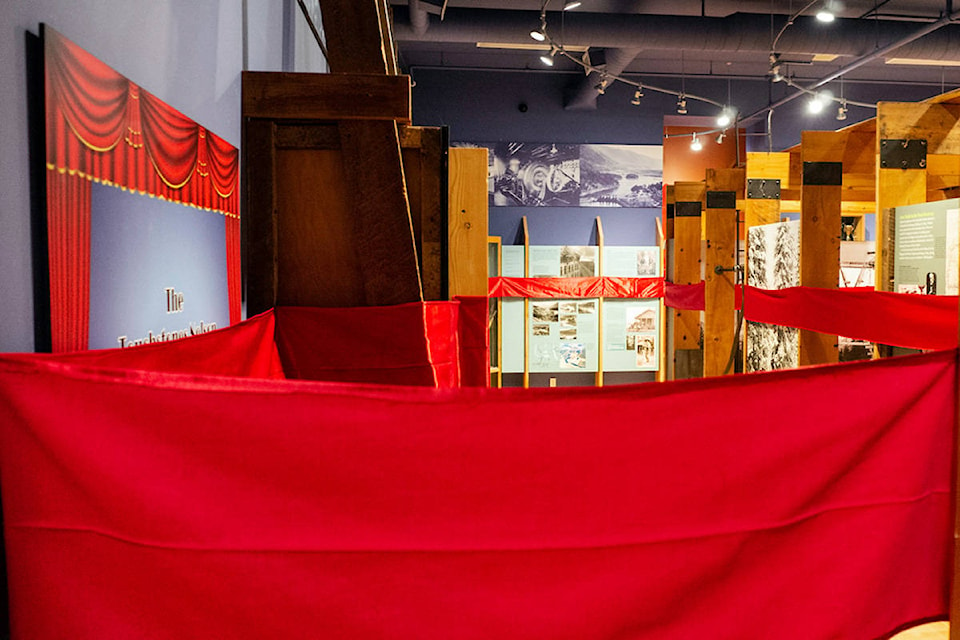By Lesley Garlow
In 1973, at age six, Phyllis Webstad attended the Mission school. Upon her arrival, she was stripped of the brand new shirt that her grandmother had bought for her first day — a bright orange shirt, with a lace-up front. Since that day, the colour orange has reminded her of how worthless she felt. Decades later, she would turn that event into a movement that is recognized across the country each year.
Sept. 30th marked Orange Shirt Day — a day when Canadians remember the thousands of Indigenous children who attended residential schools across this country. On this day, and indeed throughout the year, we encourage our community to dig into the depths of history in order to broaden understandings, and move forward together in reconciliation.
Some may wonder why learning about the residential school system is relevant to them. Or, perhaps the topic is too sad to talk about and is something that should be left in the past. However, in order for a community and for a country to heal, we must understand the full weight of the past and the legacy of negative impact today. The last residential school in Canada closed its doors as recently as 1996 and we see the consequences directly or indirectly in the over representation of Indigenous people involved in the criminal justice system, violence against women and girls, and in the systematic and pervasive inequalities in health, welfare, education, and housing among Indigenous communities and for Indigenous families living in urban areas.
For 130 years, the Canadian federal government operated residential schools. By 1900 there were 61 schools in operation, in 1931 80 schools were in operation, and approximately 130 schools operated throughout the residential school period. In our region, St. Eugene’s and St. Mary’s schools near Cranbrook were in operation until the 1970s. In June 2008, the Canadian government officially recognized the reach and traumatic legacy of the residential school system, stating:
“Two primary objectives of the residential school system were to remove and isolate children from the influence of their homes, families, traditions and cultures, and to assimilate them into the dominant culture. These objectives were based on the assumption that Aboriginal cultures and spiritual beliefs were inferior and unequal. Indeed, some sought, as it was infamously said, “to kill the Indian in the child.” Today, we recognize that this policy of assimilation was wrong, has caused great harm, and has no place in our country.”
For years now we have learned from elders and survivors, hearing stories of addiction, poverty, starvation, and heart-wrenching accounts of children being pulled from their mothers’ arms at the hands of priests and RCMP officers. We learn of the many hardships, abuses, suffering, and even death experienced in these places. We think of Phyllis — what pride she must have felt, her excitement, her dreams and her hopes lifted high as she went to school — we know that these hopes were quickly ruined and now the symbol of the Orange Shirt is to remember and honour the thousands of people and families with similar stories. (To learn more about Phyllis and Orange Shirt Day, please visit: www.orangeshirtday.org)
For years, Phyllis and so many other victims, have been asked to share their stories — in effect, to validate their trauma, to reach back to when they were children to share that voice that was not heard. When we only focus on those who were harmed, instead of those who harmed, we are not seeing the full picture. Today, figures from history that were complicit in the residential school system are enshrouded in great national pride. In today’s social climate, might it be an opportunity to dig deeper and dissect their stories?
Seeing orange shirts every year should remind us to consider the active systems of oppression that still exist today and how inequality ripples throughout our communities. How do we as a community benefit from the legacy of residential schools and how do we begin to be responsible? How do we begin to reconcile with ourselves, our families, and as a community? And how do we grow past these times of participation through complicity, and begin to repatriate ourselves to the land, the human race and help build Nation to Nation relationships through Reciprocity. History is a living thing and we are all a part of it every day.
To learn more about the residential school system and Truth and Reconciliation please visit, www.trc.ca, www.orangeshirt.org; and www.touchstonesnelson.ca. The Final Report of the Truth and Reconciliation Commission book can also be purchased at cost from the Touchstones Shop.
Lesley Garlow is Indigenous Educator at Touchstones Nelson.
